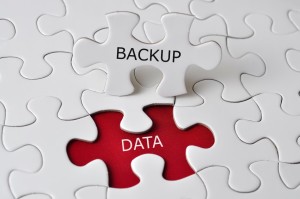Data backup is a huge concept in the world of business. It seems like everyone is doing it, and you may be following suit, but have you ever asked yourself why? What could go wrong if you didn’t maintain current backups of all of your files? In reality, it’s very unlikely that anything major will ever happen, causing you to lose most or all of your files, but if it were to happen. it would be a huge disaster for your company, leaving you closed for several days, at the very least. In some cases, it could even lead to you closing your doors forever. Here are a few things that could cause something so terrible.
Natural disaster
One of the worst possibilities is a natural disaster. A fire or a tornado could destroy your office building. A hurricane or earthquake could destroy some or all of the buildings in the area, including any data storage centers you may have near you. This is one of the main reasons that it’s so important to keep at least one backup copy off-site. A great way to do this is through the cloud, because your data will be stored at different places around the country, and hopefully immune to any single natural disaster.
Employee error
Unfortunately, people aren’t perfect. You’re employees don’t know everything there is to know about computers, and eventually, one of them will make a mistake. It will probably just be accidentally deleting the file they were working on, or turning off a computer while it’s updating, but in the off-chance that an employee were to accidentally delete a whole set of files, such as all of the accounting records from the last five years, chaos would follow, unless you have a good backup waiting to repopulate the system.
Hacker attack
There are some pretty bad people in the world. Some of them want access to your data, and some just want to hurt your company, for whatever reason. Although preventing these attacks is a conversation for another time, it’s important to remember that a hacker attack, whether or not it’s intentional, can destroy files, often important ones. Preventing these attacks is very important, but because you can never be absolutely sure that it will never happen, it’s also important to prepare for the possibility.
Virus
Although a hacker could intentionally use a virus to get into your system, there are also numerous very harmful viruses circulating that are no longer attached to any person. All it takes is for an employee to open an e-mail that shouldn’t be opened, or the download of a software that isn’t what it says it is. Some of the worst viruses have the potential of wiping out an entire system. It would be very unfortunate to lose your entire file system all because someone opened an e-mail, but it is always a possibility. Make sure you are prepared.
Fault in hardware or software
Although computer equipment and software is general very well designed, it can never be perfect. Servers will eventually get old and break. Depending on which part goes bad, you may immediately lose access to the files stored there forever. Software isn’t perfect either. After all, it was designed by a human. Although software bugs usually cause small annoyances, such as a slow computer, or having to redo something, there is always the possibility of a major bug going unnoticed.
As you can see, there is a number of things that could go wrong, potentially erasing part, or all of your file system. Make sure you’re prepared by creating backups of your entire system. For help with this, or anything else, contact us. We’re here to help.



